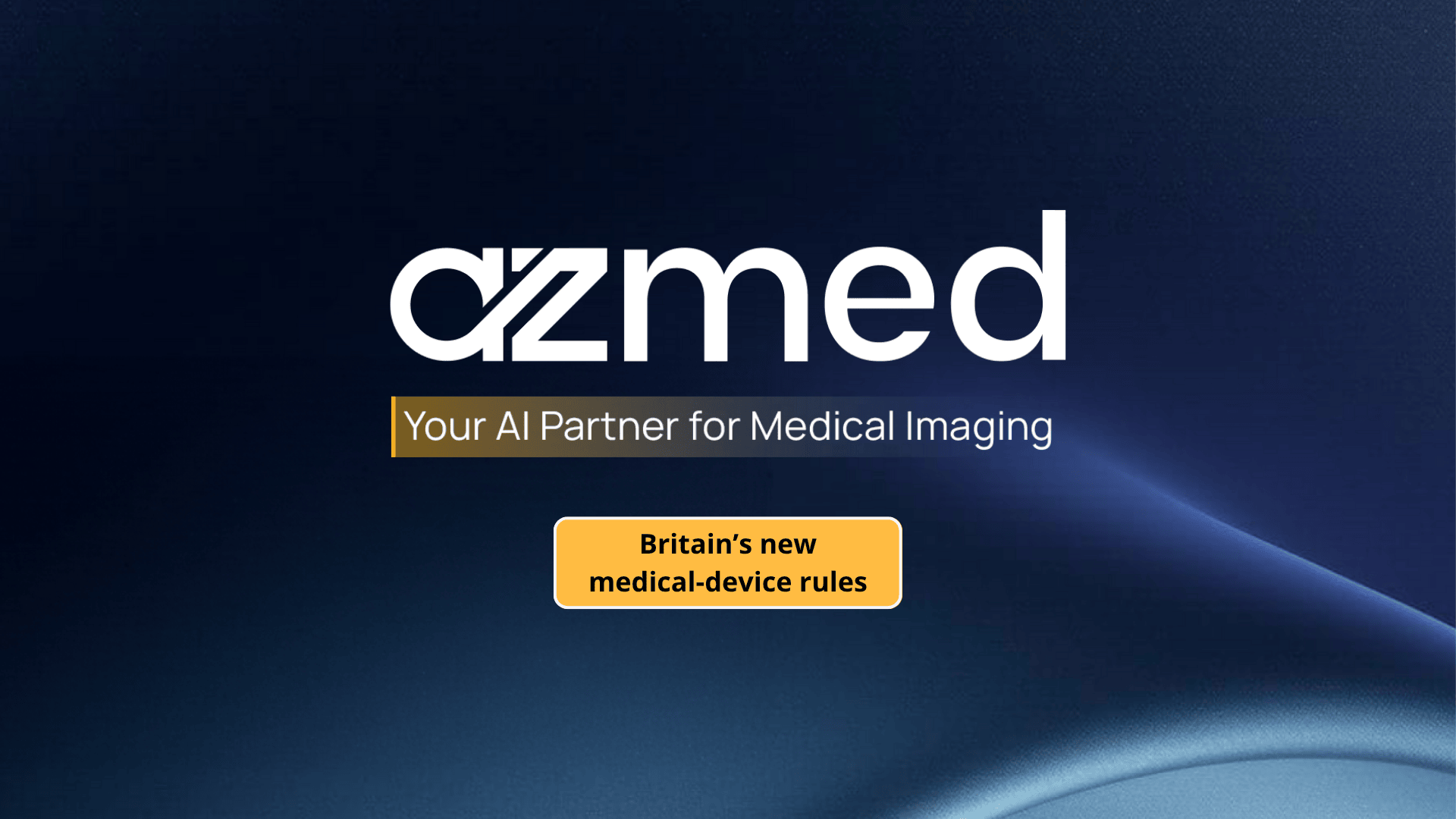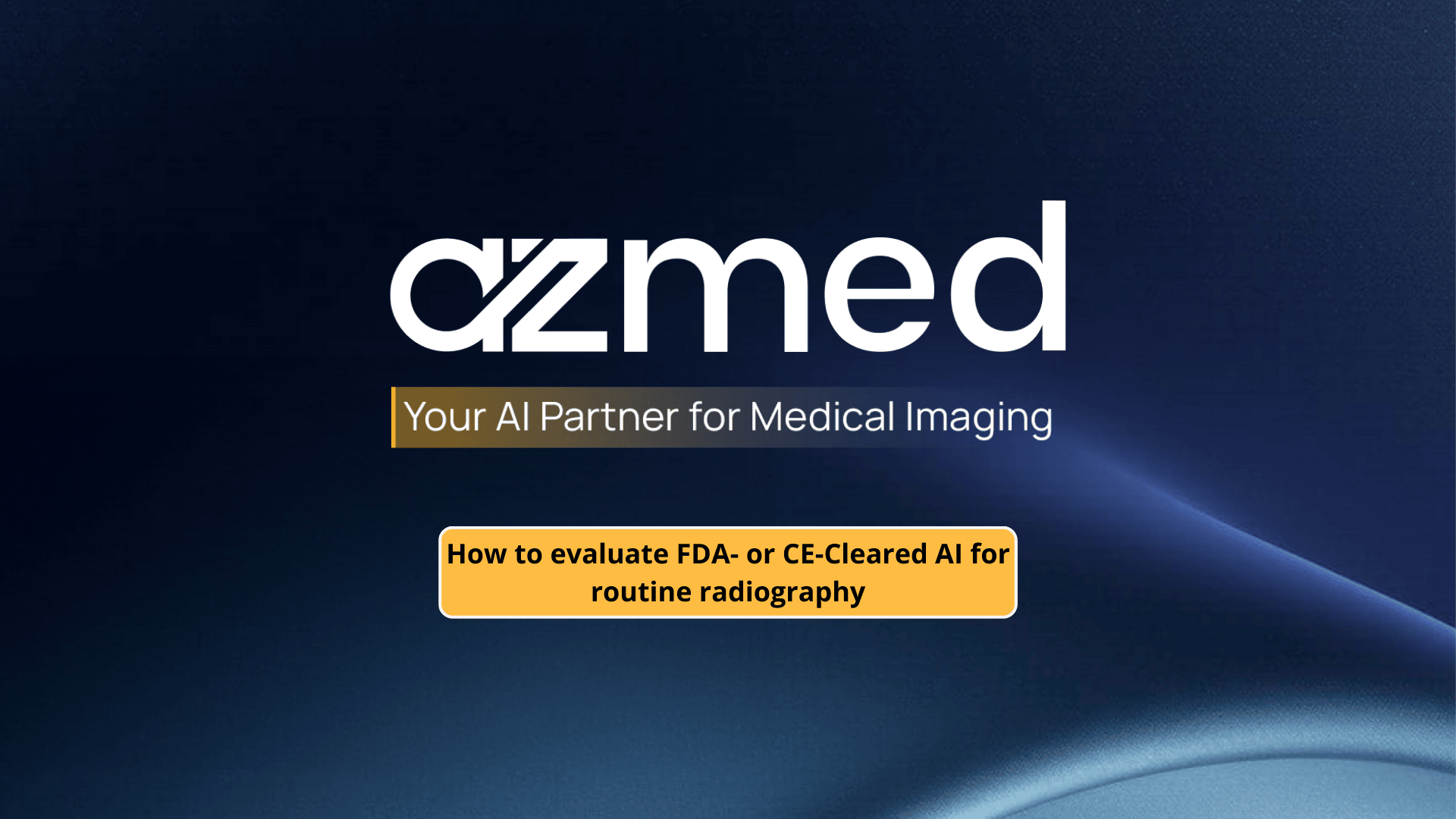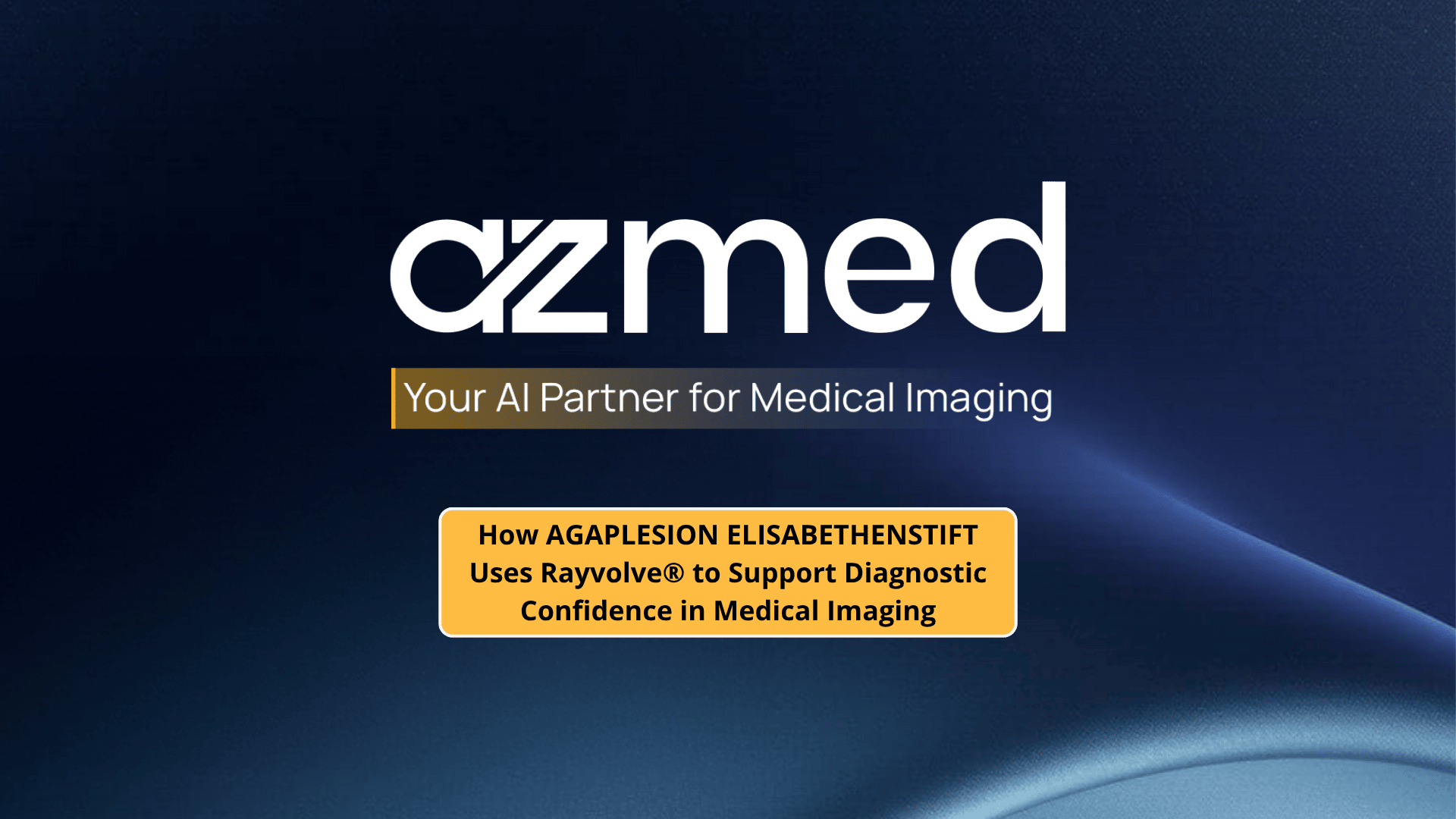On 22 July 2025 the Medicines and Healthcare products Regulatory Agency (MHRA) released a policy package that changes how medical devices reach patients in Great Britain [1]. The core idea is simple: if the United States Food and Drug Administration (FDA), Health Canada or Australia’s Therapeutic Goods Administration (TGA) has already judged a device to be safe and effective, the United Kingdom should not ask industry to pay for the same work twice. At the same time, the MHRA wants to reserve its own experts for genuinely novel technologies such as artificial‑intelligence (AI) tools that interpret medical images. This article explains every confirmed element of the reform, checks each point against official documents published on 22 July, and explores the likely impact on radiology, diagnostic imaging and AI‑based triage.
Why AI‑powered imaging is centre stage
Radiology has become the busiest area of AI regulation worldwide. A public FDA database shows that more than three‑quarters of all cleared AI medical devices belong to the radiology panel, and the majority enter through the 510(k) pathway that relies on equivalence rather than a full pre‑market approval [4]. NHS England already uses AI for stroke detection and fracture triage, and private providers are piloting AI‑based reporting assistants. Faster regulatory access therefore matters directly to patient flow and cancer‑waiting‑time targets.
Wes Streeting, Secretary of State for Health and Social Care, voiced the political objective: “It makes perfect sense that medical devices approved for use on patients in a country whose safety regulations we trust can also be used here, without red tape or bureaucracy delaying devices which can benefit NHS patients now” [1].
The international reliance route
The MHRA will create a streamlined pathway for devices that already hold a valid authorisation from the FDA, Health Canada or the TGA [2]. The agency calls this approach international reliance. It includes:
- Software as a Medical Device (SaMD), including AI algorithms used in radiology and other imaging fields.
- Implantable Class IIb and Class III devices, provided the manufacturer can show “entire equivalence” between the overseas dossier and the Great Britain requirements.
The reliance dossier must map foreign clinical‑performance studies, cybersecurity documentation and risk‑management files to the British Medical Devices Regulations 2002. A technical reviewer will confirm that post‑market surveillance plans meet UK vigilance duties. Devices that pass this check can move directly to market without replicating bench testing or clinical trials.
Lord Patrick Vallance, Minister of State for Science, framed the benefit: “The MHRA’s new international reliance routes are excellent news for patients, who will now gain rapid access to new medical devices which have been approved as safe by our trusted regulatory partners.” [1]. For AI developers used to waiting up to a year for a second audit, the change could mean revenue and clinical adoption six to twelve months sooner.
Consultation on indefinite CE‑mark recognition
Since Brexit, the CE mark is recognised in Great Britain only until 30 June 2028 for higher‑risk devices and 30 June 2030 for lower‑risk ones. The government now proposes to remove that expiry and keep CE recognition without a sunset clause [1]. If the consultation confirms public support, multinational imaging firms will be able to maintain a single European technical file for both the EU and Great Britain. That avoids separate labelling lines for CE and UKCA marks, and it means radiology AI cleared under the EU Artificial Intelligence Act will remain eligible for British hospitals.
UKCA pathway will focus on first‑in‑class innovation
When no trusted‑country authorisation exists, developers will still need a full domestic conformity assessment. The MHRA states that this UKCA route will be reserved for “first‑in‑market innovative technologies, including AI as a medical device” [1]. For the imaging community this means:
- Adaptive deep‑learning algorithms that update on real‑world data will face a formal pre‑submission meeting, model‑governance review and possibly a staged conditional approval.
- Novel clinical indications, such as AI systems that predict chemotherapy response from CT data, will require prospective studies that demonstrate clinical benefit, not just technical accuracy.
By narrowing the UKCA workload to frontier AI, the MHRA expects to speed its own decisions without lowering safety.
Removing the physical UKCA logo
Manufacturers have complained that etching, printing or moulding the UKCA symbol on devices and packaging adds cost and supply‑chain delay. Once the national Unique Device Identification (UDI) database is fully operational, the MHRA will accept digital traceability in place of the logo [1]. For software distributed by cloud download or container image, the UDI will log version number, cybersecurity patch level and manufacturer contact, giving hospitals a live inventory. Imaging‑AI vendors can push updates with UDI tags rather than re‑sticker shipment boxes.
Risk‑proportionate rules for in‑vitro diagnostics
The consultation confirms that Class B in‑vitro diagnostic (IVD) devices can reach the Great Britain market through manufacturer self‑declaration, if they hold an ISO 13485 quality‑management certificate [2]. Many imaging‑AI companies are exploring multi‑modal systems that merge scan data with point‑of‑care biomarkers. The lighter touch for mid‑risk assays may encourage integrated diagnostics where a single platform scores CT images and blood protein levels to triage sepsis.
Class C and D IVDs, such as HIV or blood‑grouping tests, still need an independent assessment.
AI Airlock: an MHRA sandbox for prototypes
Separately from the legal reforms, the MHRA is expanding its AI Airlock sandbox. One of four inaugural projects was Philips Radiology Auto Impression, which tested generative AI to draft radiologist conclusion sentences [6]. Weekly design reviews with MHRA scientists helped the team refine validation datasets and user‑interface safeguards. The sandbox will open a second £1 million cohort in July 2025. James Pound, Interim Executive Director for Innovation and Compliance, explained the motive: “Traditional regulatory pathways were not designed with AI’s unique characteristics in mind... The AI Airlock programme helps address this gap.” [6].
For start‑ups in fracture detection, lung‑nodule screener or MRI reconstruction, Airlock offers early advice on data drift, bias monitoring and adaptive release cycles—issues likely to dominate UKCA innovation reviews.
Alignment with the Life Sciences Sector Plan
Six days before the MHRA announcement, the Department for Science, Innovation and Technology launched a Life Sciences Sector Plan that pledges more than £2 billion to accelerate clinical trials, unlock NHS data and bolster the MHRA’s capability [3]. The plan values life sciences at £100 billion of UK gross value added and 300 000 jobs. Faster adoption of AI scanners fits its mission to “help doctors use cutting‑edge tech” and improve health outcomes. The MHRA reforms supply the regulatory pillar that matches the plan’s industrial finance.
Lawrence Tallon, MHRA Chief Executive, linked the strategy: “By reducing regulatory duplication, improving traceability and aligning with international best practice, we are delivering on the Government’s promise to make this the best place in the world to market medical devices and a global leader in life sciences.” [1].
Timelines and next legal steps
The MHRA will notify the World Trade Organization of the new reliance rules during the autumn of 2025, then lay the first pre‑market statutory instrument before Parliament. Its implementation webpage states that additional instruments will follow in 2025 and 2026 to cover UDI and post‑market surveillance [7]. The agency has signalled informally that reliance applications could open in the first half of 2026, subject to parliamentary scheduling.
Practical implications for imaging stakeholders
Radiology departments. Expect a faster inflow of FDA‑cleared stroke triage, chest‑X‑ray screening and CT lung‑nodule tools. Procurement teams should still check whether products that entered FDA via 510(k) have supplied complete equivalence evidence to the MHRA.
Manufacturers. Map your American, Canadian or Australian submissions to the MHRA template, update post‑market plans for UK vigilance and budget for ISO 13485 certification if operating in the IVD‑imaging convergence space.
Regulators and notified bodies. Workload should tilt from assessing me‑too algorithms toward interrogating frontier models such as adaptive segmentation systems or predictive radiomics. Data‑science talent therefore becomes more valuable inside the MHRA.
What it means for AZmed
The dual model that Britain is adopting, automatic reliance for proven devices and bespoke scrutiny for first‑in‑class innovations, could position the country as both a fast follower and a genuine AI test bed. Three considerations emerge:
- Equivalence clarity. Radiology AI often evolves incrementally. The MHRA should publish clear thresholds that define “entire equivalence” in imaging performance and cybersecurity, so developers know whether the reliance route applies.
- UDI analytics. Imaging‑AI vendors could feed de‑identified performance metrics into the UDI database, allowing the regulator to observe accuracy drift across scanner types and patient demographics in near real time.
- Early dialogue with NICE. Alignment between regulatory evidence and health‑technology assessment can shorten the gap between clearance and reimbursement. Joint scientific advice clinics would help AI developers design trials that satisfy both bodies.
Conclusion
The 22 July 2025 MHRA reforms mark the most significant shift in British device regulation in two decades. By trusting the rigorous reviews already carried out in the United States, Canada and Australia, and by continuing to accept the CE mark, the United Kingdom aims to cut months of duplication. At the same time, a sharpened UKCA pathway and an expanded AI Airlock sandbox will focus domestic expertise where it matters most: on break‑through algorithms that promise brand new clinical value. If industry, clinicians and policymakers collaborate, British patients could see cutting‑edge imaging tools in routine practice ahead of many European neighbours, while manufacturers gain a predictable, proportionate route to market.
References
- Medicines and Healthcare products Regulatory Agency. “MHRA announces proposals to improve access to world’s best medical devices for patients and to boost economic growth in Britain’s med tech sector.” 22 July 2025. https://www.gov.uk/government/news/mhra-announces-proposals-to-improve-access-to-worlds-best-medical-devices-for-patients-and-to-boost-economic-growth-in-britains-med-tech-sector
- MHRA. “Response to international reliance, UKCA marking and in vitro diagnostic devices consultation proposal.” 22 July 2025. https://www.gov.uk/government/consultations/consultation-on-medical-devices-regulations-routes-to-market-and-in-vitro-diagnostic-devices/outcome/response-to-international-reliance-ukca-marking-and-in-vitro-diagnostic-devices-consultation-proposal
- Department for Science, Innovation and Technology. “Life Sciences Sector Plan to grow economy and transform NHS.” 16 July 2025. https://www.gov.uk/government/news/life-sciences-sector-plan-to-grow-economy-and-transform-nhs
- AuntMinnie. “FDA updates its list of AI, machine learning‑enabled medical devices.” 12 August 2024. https://www.auntminnie.com/imaging-informatics/artificial-intelligence/article/15751558/fda-updates-its-list-of-ai-machine-learning-enabled-medical-devices
- AuntMinnie. “Radiology drives July FDA AI‑enabled medical device update.” 14 July 2025. https://www.auntminnie.com/imaging-informatics/artificial-intelligence/article/15750598/radiology-drives-july-fda-aienabled-medical-device-update
- MHRA. “AI breakthroughs drive expansion of ‘Airlock’ testing programme to support AI‑powered healthcare innovation.” 23 June 2025. https://www.gov.uk/government/news/ai-breakthroughs-drive-expansion-of-airlock-testing-programme-to-support-ai-powered-healthcare-innovation
- MHRA. “Implementation of the future regulation of medical devices.” Updated 22 July 2025. https://www.gov.uk/government/publications/medical-devices-future-regulation/implementation-of-the-future-regulation-of-medical-devices



